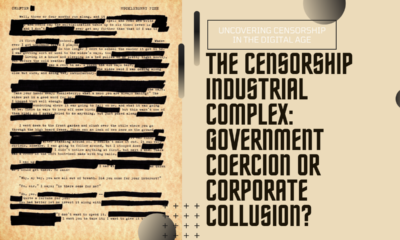Executive
Will EPA’s Power Plants Rule Help or Hinder the Energy Transition?

Addressing climate change requires transitioning to lower carbon energy sources. Well-designed regulation plays a critical role in accelerating this transition. But regulation with a high degree of litigation risk hinders rather than helps by creating uncertainty, instability, and public opposition.
Congress must give clear authorization
For over a decade, EPA has wrestled with how to regulate greenhouse gas emissions from power plants. EPA issued two previous rules, but neither saw the light of day because the courts invalidated them. The Biden EPA was on the cusp of finalizing a power plants rule that, while still controversial, struck a balance between climate ambition and legal defensibility. The latest reports, however, indicate that EPA may once again be under pressure to push the boundaries of what courts may accept.
There’s no question EPA has authority to regulate greenhouse gas emissions from power plants. The legal question is, how far can EPA go?
In 2022, in West Virginia v. EPA, the Supreme Court struck down the Obama power plants rule, which the Court found would have required electric utilities to shift their electric generation from fossil fuel to renewable energy sources. The Court held that regulations with such extraordinary, transformational effect require clear authorization that Congress did not provide.
Trying again with a power plants rule
Fast forward to 2023. EPA focused its new proposed power plants rule primarily on existing coal plants, building on the industry trend of retiring coal plants. For natural gas plants, EPA reserved its stringent new requirements for new and modified plants only. But White House reviewers reportedly insisted that EPA vastly expand its draft rule to regulate existing gas plants, too. This ill-considered expansion drew legal and technical objections from hundreds of stakeholders concerned with grid reliability.
EPA listened to these objections. In March, Administrator Regan announced that EPA would go back to the original scope to focus on existing coal plants and new gas plants. EPA deferred regulation of existing gas plants until after EPA obtains more input from stakeholders and devotes much-needed additional study to the issue.
Now the rule is back at the White House to be finalized, and there are troubling reports that EPA is under pressure to push the envelope again related to new gas plants. These reports raise serious legal issues that could jeopardize the durability of the rule in court and ultimately defeat the original mission of accelerating the pace of the energy transition. They could also undermine efforts to exit coal by impeding utilities’ ability to bring replacement generation online that can operate 24/7.
Carbon capture is limited to certain formations
One concern is that EPA will require most of the nation’s new gas plants to adopt carbon capture and storage (CCS) technology on too tight of a timeline. Because geologic storage is only viable in certain parts of the United States, nationwide deployment would require construction of large-scale geologic storage facilities and thousands of miles of new pipelines. But this unprecedented infrastructure build-out will take time and must run the gauntlet of federal, state, and local permitting and review.
It is also being reported that EPA may subject an even greater number of new gas plants to the CCS standard than was previously proposed, by including facilities operating less often (i.e., only 40% of the time). Including these units will increase the costs of bringing new gas plants online, without necessarily producing any additional environmental benefit. Overly ambitious carbon limits for gas plants will run head long into surging electricity demand brought on by other economic and policy developments, such as increased use of electric vehicles, the growing data center footprint, and onshoring of manufacturing. Tackling massive infrastructure challenges at a time of surging demand threatens to undermine the power plants rule in court: EPA will have to convince judges that it has reasonably concluded that carbon capture technology is “adequately demonstrated” and will not compromise the ability of utilities to keep the lights on.
Summary
A recent report from the Energy Futures Initiative confirmed that we are in an era of unprecedented electricity load growth, the pace of which could double or even triple over the next five years. The report concludes, we need “policies and regulations that drive toward a cleaner grid while still ensuring affordability, reliability, and resilience.” The Biden Administration should heed this advice: If its new rule flies too close to the sun, it may crash and burn like its predecessors.
This article was originally published by RealClearEnergy and made available via RealClearWire.
Ethan Shenkman, EPA Deputy General Counsel 2014-2017, is currently an Environmental Partner at Arnold & Porter helping companies navigate the energy transition.
-

 Education3 days ago
Education3 days agoCHAPTER 13: Fomenting Race Wars Begins in Kindergarten
Space Is No Longer the Final Frontier—Reality Is [forthcoming release May 2024] -

 Executive2 days ago
Executive2 days agoCHAPTER 14: Changing Hearts and Minds
Space Is No Longer the Final Frontier—Reality Is [forthcoming release May 2024] -

 Guest Columns2 days ago
Guest Columns2 days agoWhen Artificial Intelligence Tells You What A “Useful Idiot” In The Mainstream Media Cannot — The Truth
-

 Civilization4 days ago
Civilization4 days agoAntisemitism – and misguided legislation
-

 Executive1 day ago
Executive1 day agoTrump is not a paranoiac after all
-

 Executive3 days ago
Executive3 days agoCensorship Industrial Complex redux
-

 Guest Columns4 days ago
Guest Columns4 days agoGOP Right Flank Challenges Speaker Johnson (and Trump)
-

 Executive4 days ago
Executive4 days agoDon’t Let Colorado Become the Next Energy Crisis State














